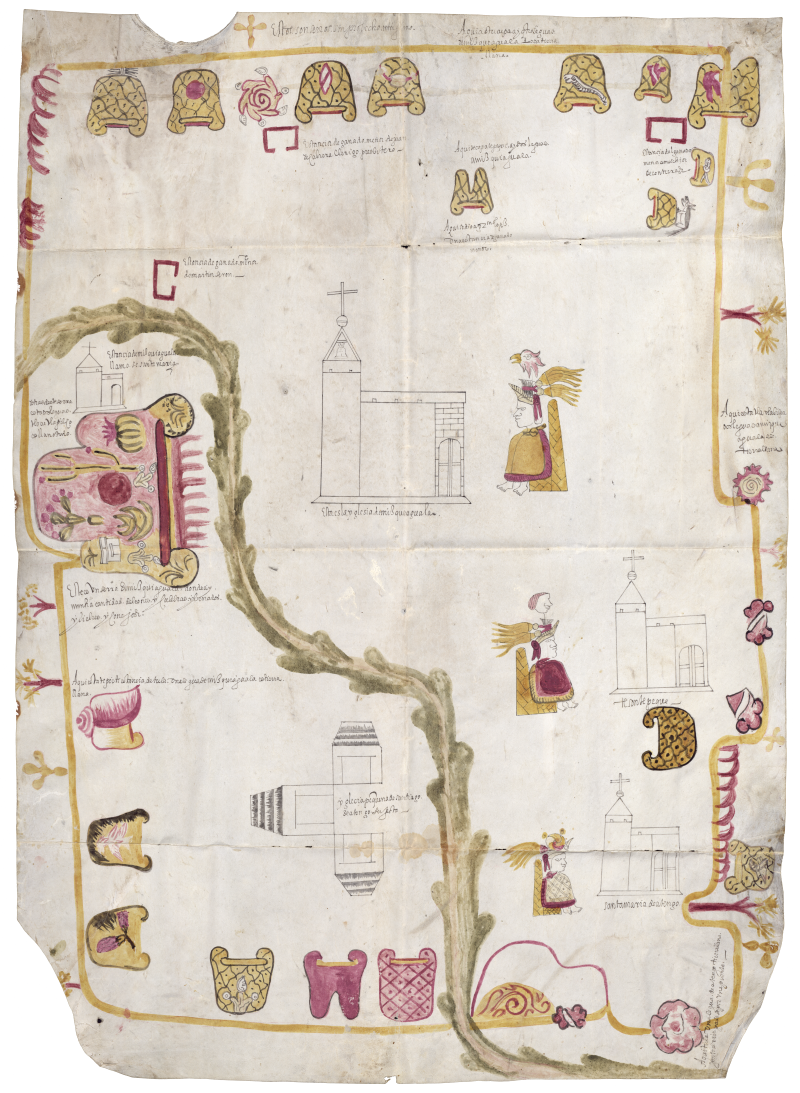Von Sivers - Chapter 18 Dashboard Image Analysis

Map of Mexican Town Drawn by Indigenous Artists (1579)
When Spaniards conquered the New World, they encountered thousands of native communities with unrelated languages, cultures, economies, and political structures. In order to better understand the many peoples they ruled, imperial officials often enlisted the assistance of local leaders in drawing the layout of indigenous towns and regions. The image here is a map of Misquiahuala (modern Mixquihuala in the state of Hidalgo in Mexico), drawn in 1579. The icons running along the border all represent native symbols for different types of mountains surrounding the town. The long yellow curving shape coming up from the bottom of the map and veering off to the left represents the main river. The water detours around a very large red and yellow mountain symbol, bearing the name of the region, "Misquiahuala" which means "place of the mesquite circles." On the mountain appear symbols for various kinds of mesquite, cacti, and agaves, with a red circle in the center. Finally, the center-right space is dominated by three seated native figures stacked vertically with the largest central figure facing Mount Misquiahuala. The progressively smaller figures below face the opposite direction. Although these figures are not identified, they most likely represented regional chieftains.
Alongside the drawings done in color by natives, there are pen and ink drawings added by a Spanish priest. The strict geometric lines and shapes that he drew contrast sharply with the native symbols. Instead of focusing on the landscape, the priest concentrated on the manmade environment, adding four meticulously drawn churches, three placed in front of the seated native leaders, and a fourth to the side of the mesquite mountain. He also added carefully written Spanish names and descriptions. Next to the mountain covered with cacti, he described the wide variety of wildlife present: deer, hare, rabbits, snakes, and mountain lions, which for him clearly were of greater importance than the native plants. By contrast, the native artist noted Spanish settlements by an extremely simple symbol: a rectangle partly open on one side.
Source: Courtesy of the Library of Congress